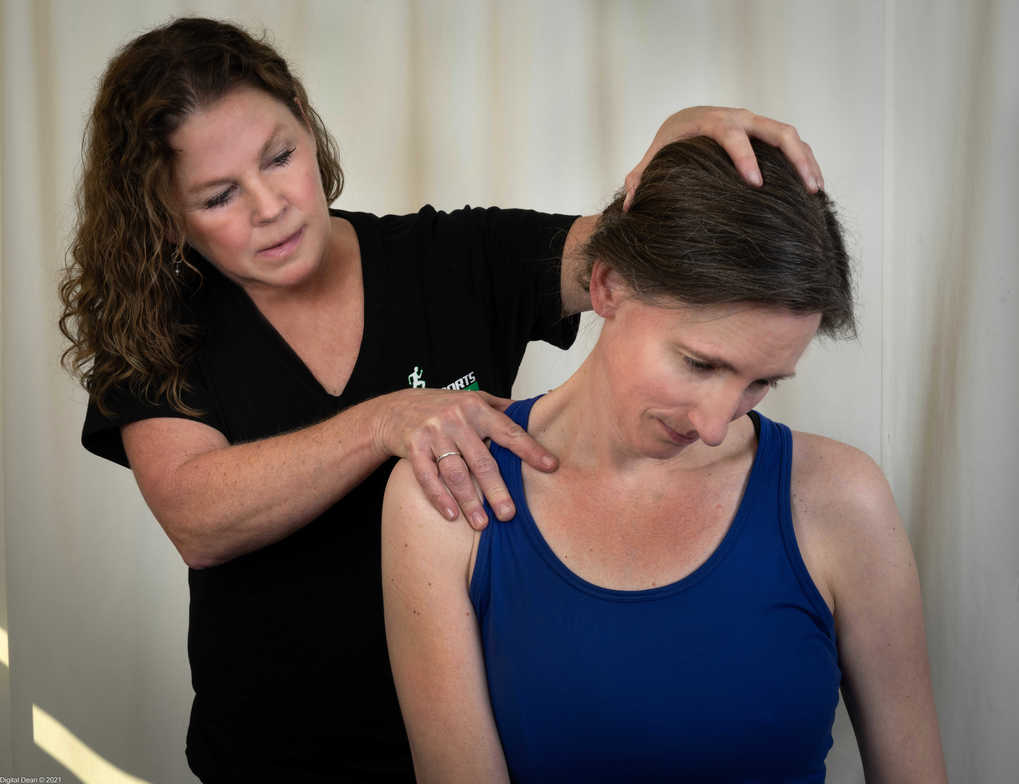Active Release Technique (ART) is a hands-on treatment in which muscle, ligament, fascia, tendon, nerve, or capsule is held with tension on the tissue involved (not the skin) in a shortened position, while the structure is lengthened through a full, comfortable range of active motion and tension maintained throughout the movement. There is no skin tension or sliding on the skin.
Active Release Technique differs from massage in the use of movement of the limb, or spine under tension, and the attention to anatomical detail and possible nerve entrapments in the area. Instead of treating a general area, an Active Release Technique provider uses their hands to feel abnormal or damaged tissue in muscle, fascia, tendons, ligaments or nerves. Abnormalities present as having a different texture and tension and affect the movement and function that a patient is able to perform.
Who Can Benefit from Active Release Technique?
ART can be used on every patient, regardless of your job description or your athletic passion. Active Release Technique can address repetitive injuries, adhesions, contractures, tissue hypoxia, and joint dysfunction.
What Injuries can be Treated with Active Release Technique?
- ITB Syndrome
- Hamstring Strain
- Hip flexor issues
- Plantar fasciitis
- Shin splints
- Achilles tendinitis
- Pre and post sports events
- Shoulder and rotator cuff problems
- Neck pain
- Back pain
- Knee pain
No treatment is done without looking at FUNCTION and HOW you move.
How does ART Help?
Active Release Technique promotes faster recovery, restoration of normal tissue function, and can prevent injuries. For the sportsperson, it will allow you to train better and more consistently. For the worker, it can keep you injury free as well, if used as a preventative treatment.
Abnormal tissue can go unnoticed by an athlete and the office worker or it can manifest into an injury. Symptoms of damaged tissue include tightening and shortening of the muscle. What used to be easy becomes a chore – eg stiffer golf swing rotation, or struggling to reach your seatbelt. A loss of mobility, restricted range of motion, poor biomechanics, overcompensation in other body parts, and loss of strength can all be identified and corrected with ART. Often a patient will not know scar tissue is building up until it is too late. No obvious trauma necessary!
As an ART provider, my job is to locate the smaller ongoing source of “insult” to that tissue.
Possibly an IT band pain can be traced back to a dysfunctional hip. Tingling or numbing in the hand can be from constant insult to the nerve from poor computer desk set up and the shoulder, neck, forearm position causing the nerve to be entrapped up the arm or neck; not even in your hand!
What Frequency Works Best for ART?
Everyone responds differently and treatment frequencies can vary. Your ART practitioner will ideally book your first two treatments reasonably close together so that the second treatment can build upon the previous one. Your ART practitioner will be able to answer this question after they assess you. Examples of this initial improvement might be a decrease in pain, an improvement in range, less intense pain, and an improvement in movement and activation patterns. Based on your injury, how long it has been present, and how you respond to your initial treatment, your ART practitioner will be able to offer you some guidance.
While not always the case, chronic problems (an accumulation of micro-traumas), old adhesions and tendinopathies (that leathery type tissue) can take longer to rehabilitate but some improvement should be felt straight away. The key to successful ART treatment is determining the problem, defining its cause and treating that rather than chasing the pain!

